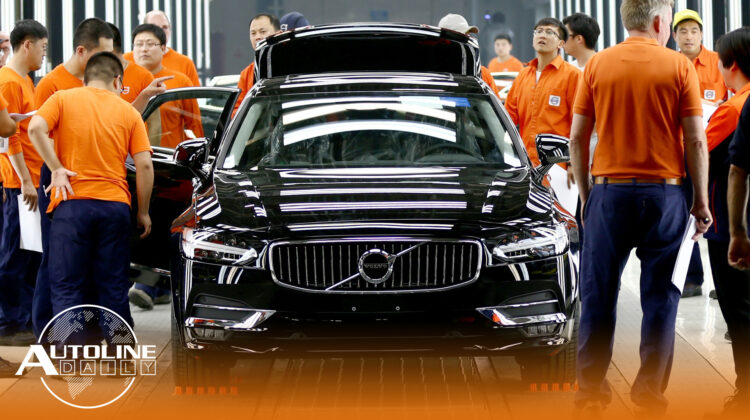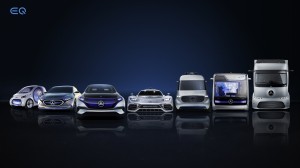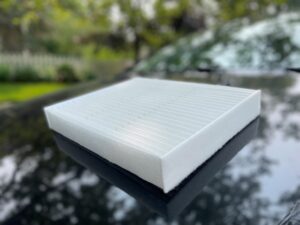
Listen to “AD #3123 – Stellantis Close on Solid State Batteries; Volvo Taking Full Control in China; Mercedes' Big Electric Plans” on Spreaker.
Follow us on social media:
Runtime: 10:08
0:07 Stellantis to Have Solid State Batteries in 2026
1:08 Tesla Going to Accept Bitcoin Again
1:41 Volvo Taking Full Control of China Operations
3:36 Chip Shortage Hits GM’s Full-Size Pickups
4:09 Toyota Offering Digital Owner’s Manual
5:00 Used Batteries Piling Up in China
7:32 Mercedes Has Big Plans to Go Electric
8:43 Ford Improving Its Cabin Air Filters
Visit our sponsors to thank them for their support of Autoline Daily: Bridgestone, Intrepid Control Systems, Magna and Wacker.
This is Autoline Daily, the show dedicated to enthusiasts of the global automotive industry.
STELLANTIS CLOSE ON SOLID STATE BATTERIES
Looks like solid state batteries for electric cars could be a lot closer than we expected. Carlos Tavares, the CEO of Stellantis, says they plan to have solid state batteries in production by 2026. Speaking to the Automotive Press Association for a virtual interview he said they’ve already validated their technology for solid state batteries. Stellantis is involved in a joint venture called ACC or Automotive Cell Company, which includes Saft, the French battery maker. Before it comes out with solid state batteries, Tavares says Stellantis will build 5 battery plants to make conventional lithium batteries. Three of those will be in Europe, with at least one each in France and Italy. Two will be in North America, possibly one in the US and one in Canada. Tavares says they have to evaluate whether those plants can then be converted to make solid state batteries.
TESLA GOING TO ACCEPT BITCOIN AGAIN
A few months back, Elon Musk announced Tesla would accept Bitcoin as payment for its cars. But then a few weeks later Musk changed his mind. He said he was worried that mining the cryptocurrency uses too much electricity generated by fossil fuels. And now he says Tesla will likely start accepting Bitcoin as payment once again, after it determines if the coins are mined with at least 50% renewable energy. The news sent the price of Bitcoin up 8% yesterday.
VOLVO TAKING FULL CONTROL OF CHINA OPERATIONS
Over 20 years ago China mandated that foreign automakers had to establish a joint venture with a Chinese car company if it wanted to make cars in China. Next year it’s going to drop that rule. And Volvo will be one of the first to take advantage. It’s going to buy out the 50% stake in its Chinese operations it doesn’t currently control from parent company Geely. That includes its plants, R&D facility and its national sales company in China. Some analysts say this could make Volvo more attractive to investors if it goes forward with an IPO. But other foreign automakers may want to think twice before they try to take more control from their Chinese partners because it could create bad blood. Volvo doesn’t face that problem because even though Geely will no longer own part of its Chinese operations, Geely still owns Volvo.
CHIP SHORTAGE HITS GM’S FULL-SIZE PICKUPS
GM has done a good job of prioritizing its full-size pickups when it comes to the chip shortage, but now it doesn’t even have enough to make its most profitable vehicles. The automaker will suspend production of the Silverado and Sierra at its plants in Fort Wayne, Indiana and Silao, Mexico next week. At the same time it’s also cancelling production of the heavy-duty versions of those models at its Flint Assembly plant. The global auto industry is now in the worst phase of the chip shortage.
TOYOTA OFFERS DIGITAL OWNER’S MANUAL FOR SIENNA
Have you ever read your owner’s manual? Of course not. They’re typically over 300 pages long and jam packed with legal disclaimers. Toyota would love to get rid of the cost of printing those thick books and sticking them in every glove box, so it’s experimenting with a digital version in the Sienna minivan. But owners can still get the printed version if they want it. The digital version is powered by Google Cloud, it’s app-based and includes a voice-activated virtual assistant. Owners can ask personalized questions and get real-time answers for whatever they need to know about the van. Toyota is not the first to do this and with others like Tesla going digital, it’s probably the beginning of the end of the printed owner’s manual.
USED BATTERIES PILING UP IN CHINA
Used EV batteries are starting to pile up in China. The Global Times reports that there were 200,000 tons of used batteries in 2020, and that’s expected to hit about 780,000 tons in 2025. Recycling those batteries is becoming a critical issue. Lithium batteries for EVs are expected to last 6 to 8 years and the market to recycle them could reach $15.5 billion in China by 2025. But so far those batteries are largely disassembled by hand in small workshops. So it’s expensive. And if not done properly, it can lead to a lot of pollution. The Cutting-Edge Technology Research Institute says one 20-gram cell phone battery can pollute one square kilometer for 50 years. Chinese experts are calling for government subsidies to make battery recycling faster, cleaner and cheaper.
Battery recycling will be the topic on Autoline After Hours this afternoon. We’ve got Ajay Kochhar, the CEO of Licycle coming on the show to talk about their new process to recycle batteries. It’s impressive enough that General Motors formed a joint venture with Licycle to recycle 100% of the material scrap from its EV batteries. We’ve also got a number of other topics we’ll cover in the show: First: Has Elon Cracked the Subscription Code with FSD? Next: Are Rivian’s delays related to chips, or is making trucks hard? And finally: Will Lucid’s SPAC Make It Fully Legit or Just Valuable? Join John and Gary as well as Joann Muller as they explore what’s going on in the automotive industry.
MERCEDES LAYS OUT PLAN TO GO ELECTRIC
Mercedes is going to spend a whopping 40 billion euros to go all-electric by the end of the decade. From 2025 on it will have an all-electric version for every model it makes. Those vehicles will be built off three dedicated EV architectures; one for medium to large passenger vehicles, one for AMG and one for vans and light commercial vehicles. Over 200 gigawatt hours of battery capacity will be needed to power all of those vehicles. Mercedes says it will open 8 cell manufacturing sites around the world, in addition to 9 plants that will be dedicated to making battery systems. The batteries will be highly standardized, which means the same pack can be used in 90% of its cars, SUVs and vans. Mercedes will also bring electric motor production in-house and significantly expand its charging network. Even with all of the changes Mercedes is making it still expects to maintain similar profit margins with BEVs as it does with ICEs.
FORD ROLLING OUT NEW CABIN AIR FILTER
At the same time that wildfires are burning all across the western United States, Ford wants to give customers a little more peace of mind when it comes to the air quality inside their vehicle. Starting in the 4th quarter of this year a good percent of its lineup will come standard with a new cabin air filter. It’s called Refresh95 because it can remove at least 95% of some particles that are only 2.5 microns in size. For a little context, a human hair is about 70 microns in diameter. Particulates that are 2.5 microns or smaller can embed themselves in your lungs and lead to lung cancer. By the end of 2023 Ford says most of its lineup will use the new filter and current customers with a compatible vehicle can buy them from their dealer for about 35 bucks.
And that brings us to the end of today’s show. Thanks for watching and we’ll be right back here again tomorrow.
Thanks to our partner for embedding Autoline Daily on its website: WardsAuto.com
Seamus and Sean McElroy cover the latest news in the automotive industry for Autoline Daily.









